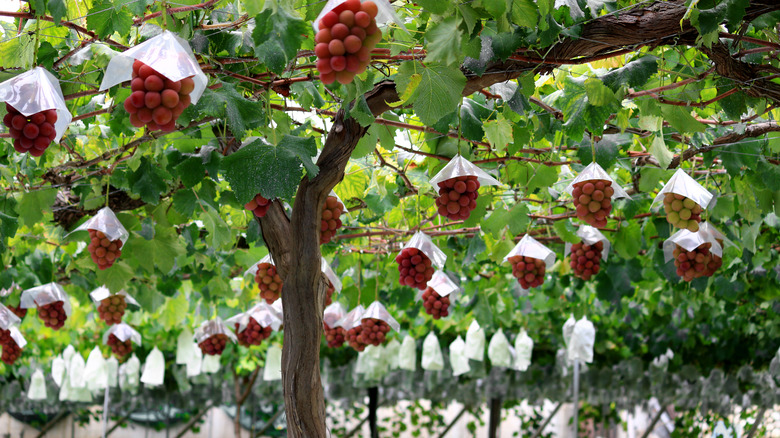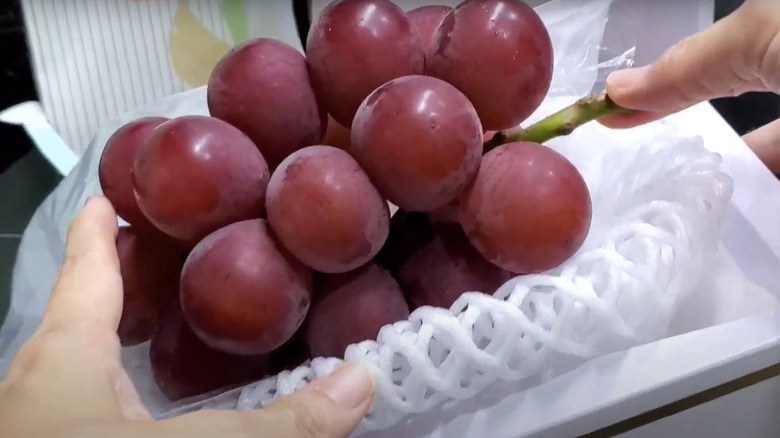These Are The Most Expensive Grapes In The World
In Japan, where fruits are considered a luxury, you're unlikely to find a fruit that hasn't been manicured to perfection. According to BBC News, Japanese supermarkets don't sell any fruit that's not the right size, color, or shape. You won't find a bump or blemish on any fruit on the shelves. This high standard doesn't just start at the store, but begins in production. In Japan, farmers don't just grow fruit that tastes good, it has to look good, too. In fact, fruit is so revered that it's common for fruit to be given as gifts.
Fruits in Japan go through a rigorous inspection process in order to meet quality standards. There is perhaps no better example of this than Japanese Ruby Roman grapes. These grapes aren't just scrutinized, they are classified according to grade: Superior, Special Superior, and Premium. To qualify as Premium, the grapes must be absolute perfection. In fact, according to Business Insider, only two bunches of the grapes met the qualifications of the Premium grade in 2021, and none qualified in the two years prior. The sheer rarity of these grapes, and meticulous farming practices that border art, are what drove one bunch of these grapes to sell for $12,000, or $400 per grape, in 2020.
Ruby Roman grapes are held to strict standards
So what makes these grapes so special? In addition to being described as "elegantly sweet," "fragrant," and "dripping of juice, according to Business Insider, Ruby Roman grapes only grow in Japan's Ishikawa Prefecture (via Ishikawa Food), but even if you were able to get there, it's unlikely you'd get near one, let alone have a taste. These grapes are heavily monitored, and their environments are controlled down to the level of light and temperature they're exposed to.
When it comes to beauty standards, Ruby Romans are held to very specific criteria. According to Business Insider, each individual grape on the vine is measured by weight, size, color, and sugar content to ensure uniformity. To meet even the minimum grade, each grape must weigh at least 20 grams and measure 30 millimeters in diameter. A tool is used to detect the sugar content of each grape, which is expected to be over 18%. And, as Ishikawa Food notes, each grape must be the right color, according to an exact color chart. If any grape shows even a hint of damage, it's snipped off the vine.
This perfection comes with a hefty price tag, but you don't have to save up for the Premium grade Ruby Romans. The "lesser" versions are probably very tasty. In fact, we'd wager that the ones that didn't make the cut on the vines taste pretty good too.

